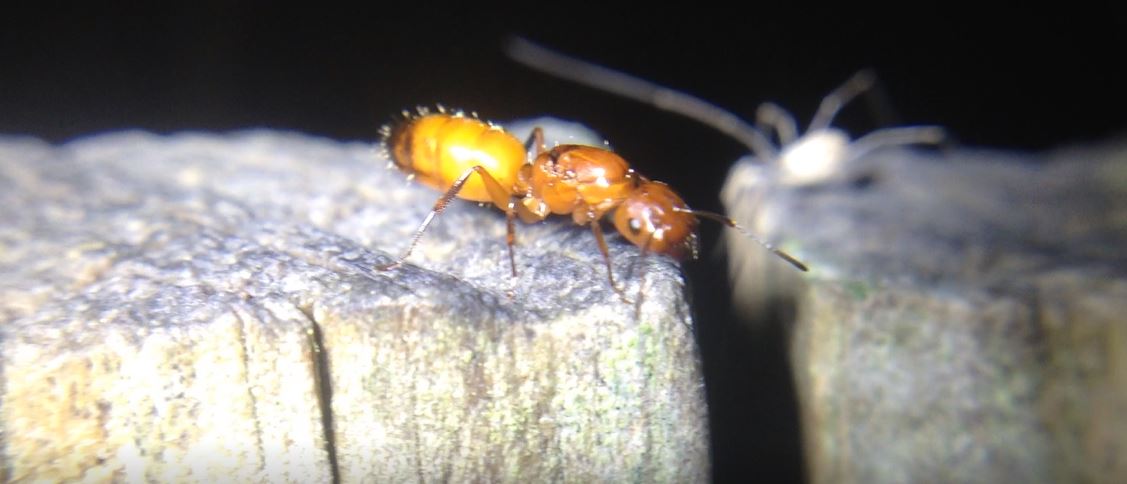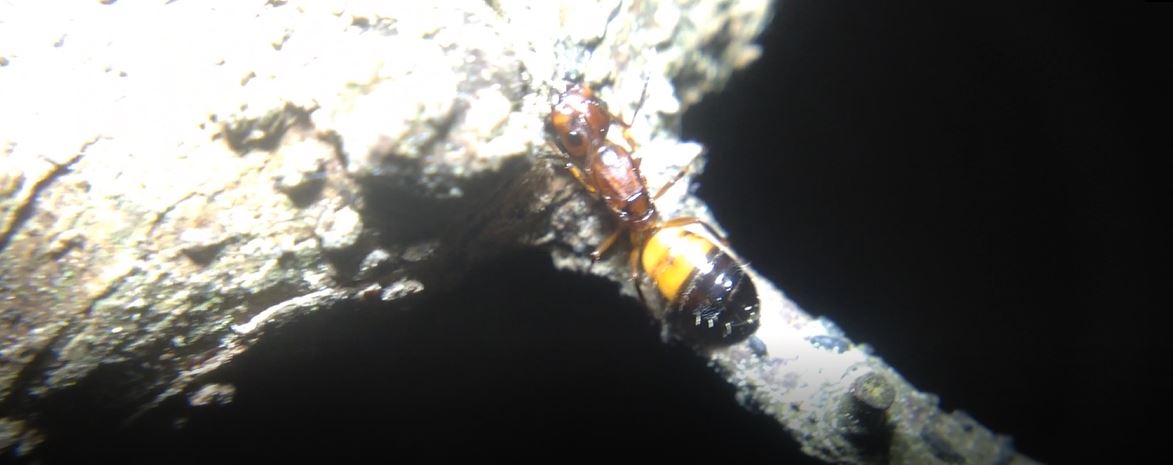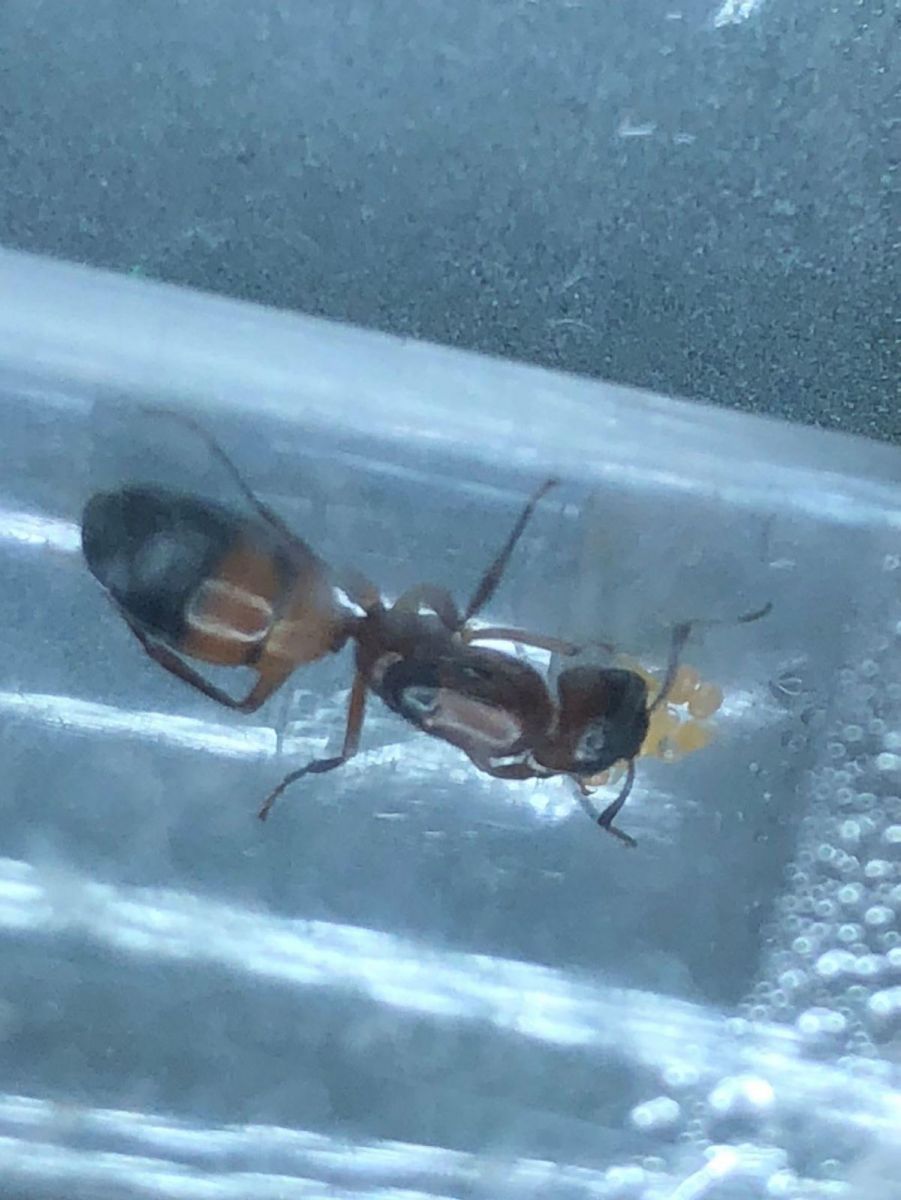Among my many queens are two, in particular, that stand out, my two Camponotus snellingi queens. Their color is absolutely gorgeous, and I'm really glad I found them. I've seen three queens this year, all of which with different, unique colorations. The first queen was primarily orangy-yellow with a yellow gaster with black at the tip. The second queen, my personal favorite whom I was not able to capture as she escaped, was a deep red with a yellow gaster and more black on her abdomen than the first queen. The third queen which I found yesterday morning in between two logs was similar in coloration to the first queen but like the second queen, she had more black on her gaster than the first one. Out of all of my queens, these are some of my favorites. I have them in the same setup as all of my other queens, but with some pieces of wood for them to hide under as that's what they seem to like the most. These ants are arboreal, so I will have to design a better setup for them as they get their first nanitics. I plan on housing them the same as all of my other arboreal ants, in a hollow twig cut down the center with a sheet of pliable plastic over it. I could also drill into a piece of wood and carve out some chambers for them. I will update you guys on their progress.
Edited by CloudtheDinosaurKing, May 25 2019 - 7:52 PM.



















